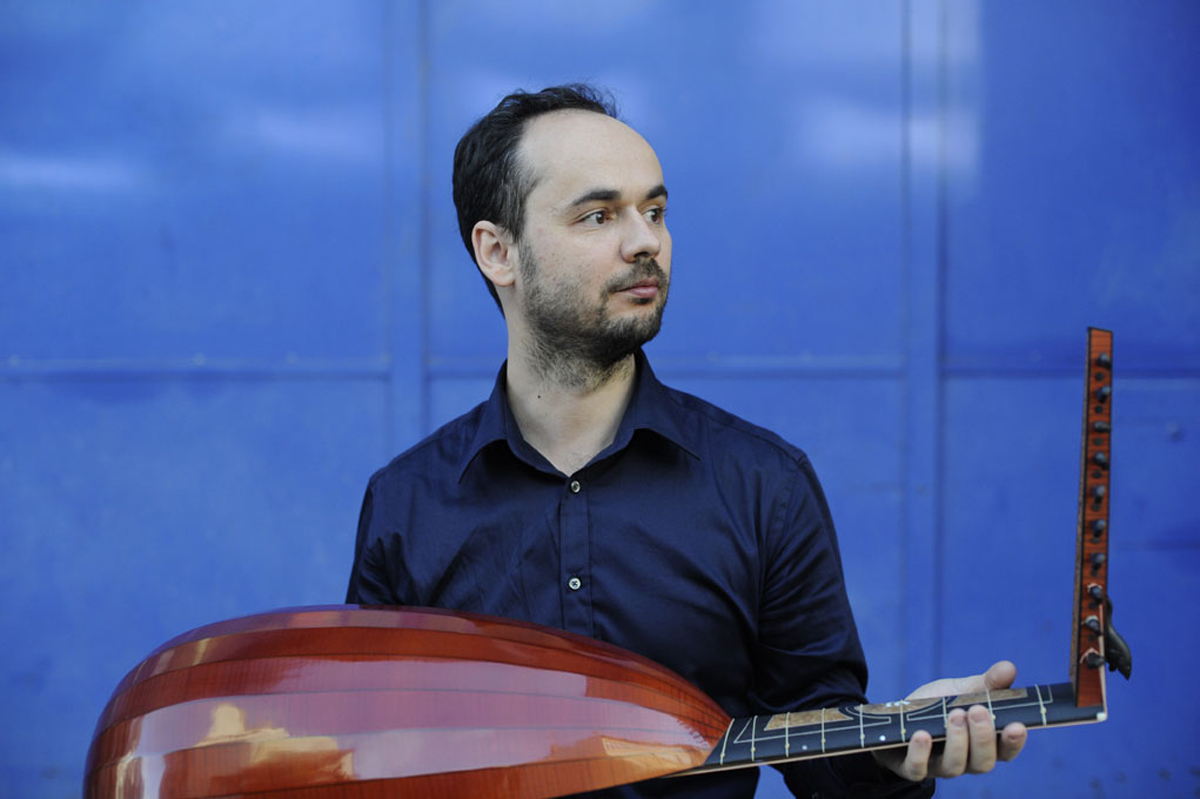Notice
NEWS : Lutenist Miguel Serdoura Makes an Auspicious American Debut
By Stephen Raskauskas, Bachtrack.com, March 10, 2014
On this side of the Atlantic, French baroque music is performed embarrassingly little. Solo lute concerts of this repertoire, or lute recitals of any kind for that matter, are rarer still. But last Friday, lucky audiences at the American Philosophical Society heard an exceptional recital of French lute repertoire by Paris-based lutenist Miguel Serdoura.

Two years ago in the same venue, Serdoura teacher Hopkinson Smith performed a lute recital also presented by the Philadelphia Chamber Music Society. Since, PCMS has been committed to presenting annual solo recitals of music for plucked strings. Though Smith is one of the world’s best lutenists and a pioneer in reviving the instrument in our own time, in many ways, Serdoura s recital was more enjoyable. A comparison is a bit unfair, since Serdoura stands on the shoulders of a giant. But, Serdoura's concert was more satisfying musically because when he plays, even the most difficult passages ring out lyrically. Playing a continuo instrument, lutenists often spend more time accompanying singers than playing solo repertoire. Not all are able to imbue their instrumental playing with vocal qualities. Serdoura’s technique simply sings.
The concert program on Friday gave audiences a brief introduction to the evolution of French lute styles in the 17th and 18th centuries. The program featured suites by Germaine Pinel and Robert de Visèe, each of whom were the leading French lutenists of their respective generations. Their music was not only highly valued in its own right, but also influenced other instrumental genres. We hear distant echoes of the Suite in D minor that Serdoura performed by de Visée in the keyboard suites of J.S. Bach, for example. Given the enormous impact of the French lute style, it is a terrible shame that this glorious solo repertoire is heard so infrequently today in concert.
The first two sets on the program were dance suites by Pinel, private lute teacher to Louis XIV. The music is in unmeasured notation, requiring modern performers to use a good deal of imagination and embellishment to realize it today. Serdoura's command of this style is impressive indeed, and he performed each piece as if it were composed out in full, rather than largely improvised. In the Suite in F major that began the concert, the Sarabande and Courante II were especially charming. But, the suite's concluding Double, presenting a more florid version of the preceding Courante II, was the most thrilling movement of all. The Gigue that concludes the Suite in D minor was also quite rousing.
Because my own sensibilities are more sympathetic with those of de Visée and his generation than they are to those of Pinel, I must confess I enjoyed the second half of the concert featuring the later repertoire the most. First, Serdoura played de Visée’s arrangement of Couperin's popular piece Les Sylvains, hypnotizing the audience with his flawless technique. The piece itself, with its repeated sections arranged in rondeau form, is hypnotic in its own right. Serdoura's interpretation was so enjoyable that I wish he had indulged and taken a few more optional repeats. His performances of the two suites by de Visée that followed were also delightful. Serdoura played the expansive Allemandes in each of the suites with arresting gravitas. His performance of the Sarabande from the Suite in D minor was extremely rewarding. The dance’s lush but languorous melodies sang beautifully under Serdoura's sensitive fingers.
I would have loved to hear this talented man play more than just an hour of music on the concert program, particularly since the opportunity to hear a musician of his kind and and quality is so rare here. I understand, however, that with such sophisticated repertoire, a longer program might have fatigued the player as well as the audience. In fact, even the world's most acclaimed players are bound to make a few mistakes in a full two-hour recital given how technically taxing this polyphonic music can be. Given the delicate sound the instrument makes, hours of this music can make even early music enthusiasts doze a bit. But, the digestible length of the concert allowed Serdoura to maintain a level of focus both on stage and in audience. His performance on Friday was flawless, and hopefully Serdoura will hop the pond again soon.

